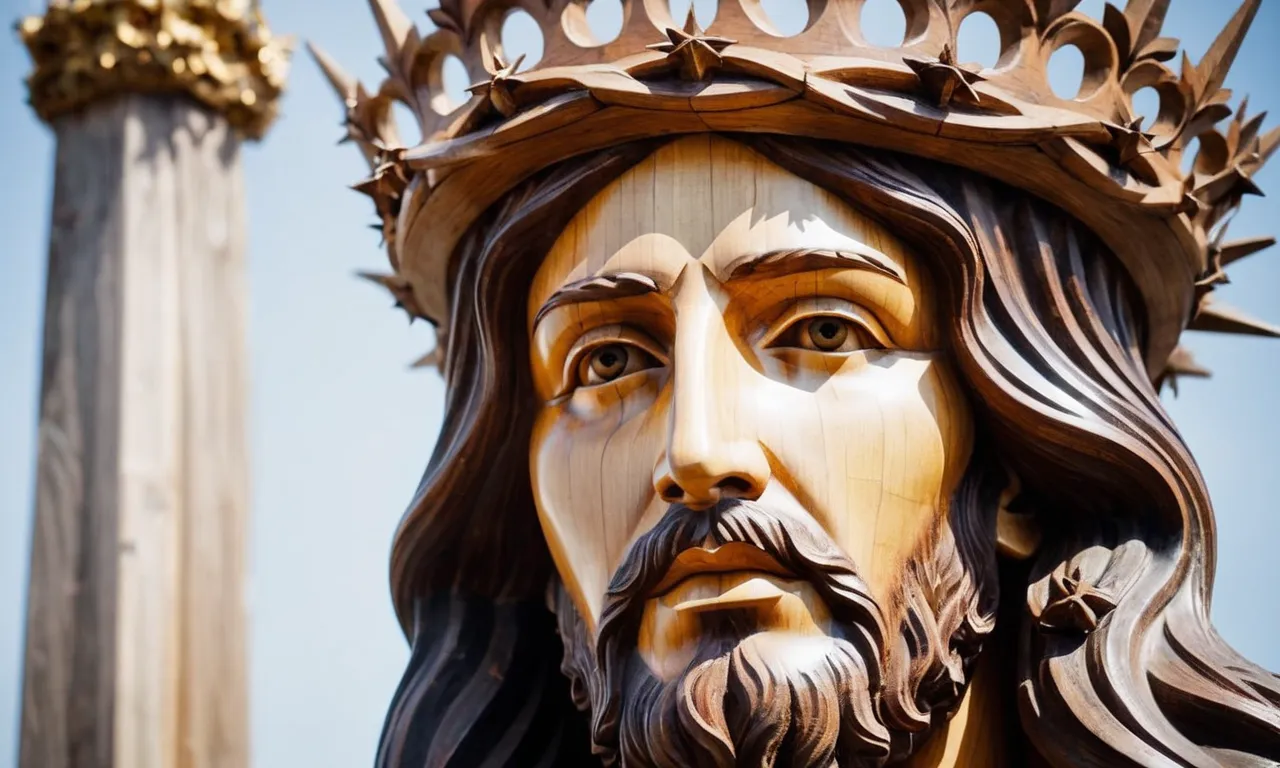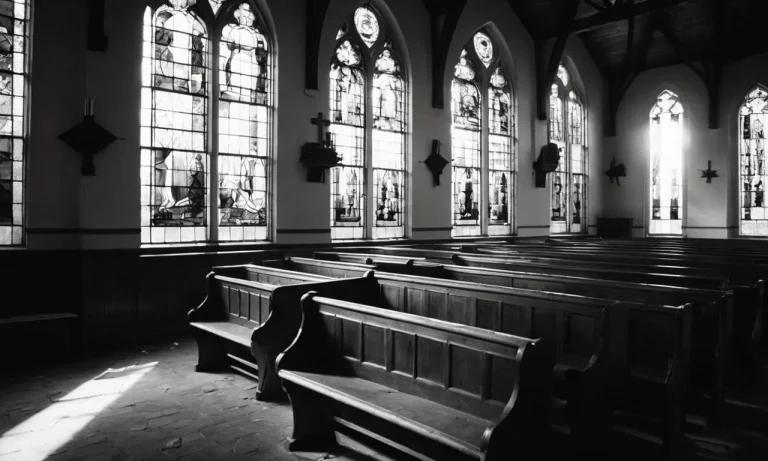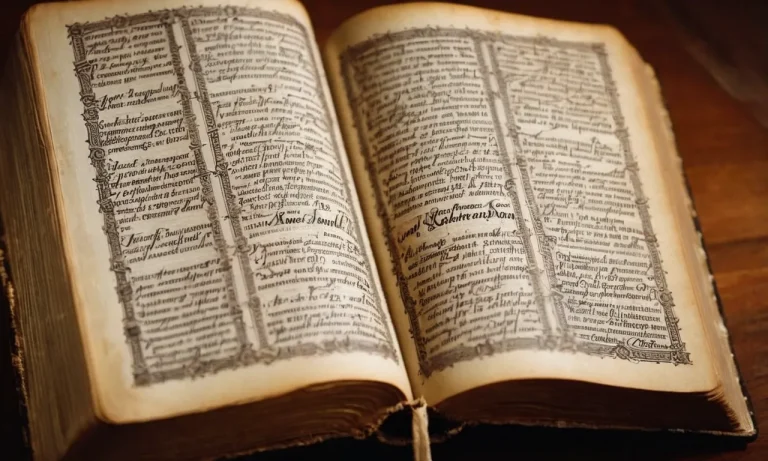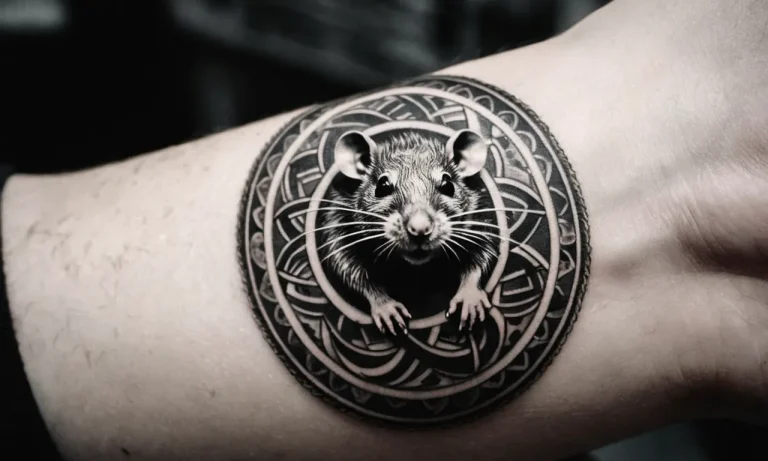What Was Jesus’ Crown Made Of? A Detailed Look At The Materials Used
The crown of thorns placed on Jesus’ head before his crucifixion is one of the most iconic symbols of his Passion.
But what was this crown made of? If you’re short on time, here’s a quick answer to your question: Jesus’ crown of thorns was likely made from the branches of the Ziziphus spina-christi tree, commonly known as Christ’s thorn jujube.
In this comprehensive article, we will examine in detail the biblical accounts of Jesus’ crown of thorns, what scholars and religious experts believe the crown was made from, the symbolic meaning behind the materials used, and the crown’s legacy and significance to the Christian faith.
The Biblical Accounts of Jesus’ Crown of Thorns
The Gospels of Matthew, Mark, and John
The crown of thorns placed on Jesus’ head is mentioned in the Synoptic Gospels of Matthew, Mark, and John.
All three describe how Jesus was mocked and flogged by Roman soldiers before his crucifixion (Matthew 27:27-31, Mark 15:16-20, John 19:1-3).
The soldiers put a scarlet robe on Jesus, placed a staff in his hand, and twisted together a crown of thorns and set it on his head.
They mocked him saying, “Hail, King of the Jews!” Matthew and Mark specifically state the soldiers “wove” or “twisted together” the crown out of thorns, indicating it was not a single thorn bush but rather individual thorns braided into a circle and placed on Jesus’ head.
The Gospel of John provides additional details, describing the crown as made of “thorn branches” (John 19:2).
John also states that the soldiers struck Jesus on the head with a reed after placing the crown of thorns on him. The striking could have further embedded the thorns into his scalp.
Common Details and Differences in the Accounts
While the Gospels of Matthew, Mark, and John have slight differences in wording, they contain common details about the crown of thorns:
- It was placed on Jesus’ head by Roman soldiers.
- Its purpose was to mock Jesus’ claim to be King of the Jews.
- It was made of thorny material, not just a single thorn branch.
- It caused physical pain to Jesus.
While the composition of the crown cannot be known for certain, the author’s intention was clearly to convey the cruelty and humiliation Jesus faced before his death.
The painful crown demonstrated the soldiers’ mockery of Jesus as “King of the Jews.”
Despite the differences, the accounts agree on the crown’s piercing nature and its use as an instrument of torture and ridicule by Jesus’ captors.
Theories on the Plant Materials Used
Ziziphus spina-christi (Christ’s thorn jujube)
One of the most widely-accepted theories is that Christ’s crown of thorns was woven from branches of the Ziziphus spina-christi tree, known as the Christ’s thorn jujube.
This theorizes that branches from this tree native to the Levant region were cut and twisted into a mocking “crown” placed on Jesus’ head before his crucifixion.
Secondly, the tree grows readily in the Jerusalem area where Jesus was brought before Pilate. Its branches have small sharp thorns which could have easily cut Jesus’ head.
Additionally, the flexible branches can be woven and shaped into a crude “crown” without breaking.
So this tree would have been plentiful in the area at the time. A crown hastily woven from branches by Roman soldiers could have been the origin of the agonizing crown placed on Christ’s head in mockery of his claims of kingship.
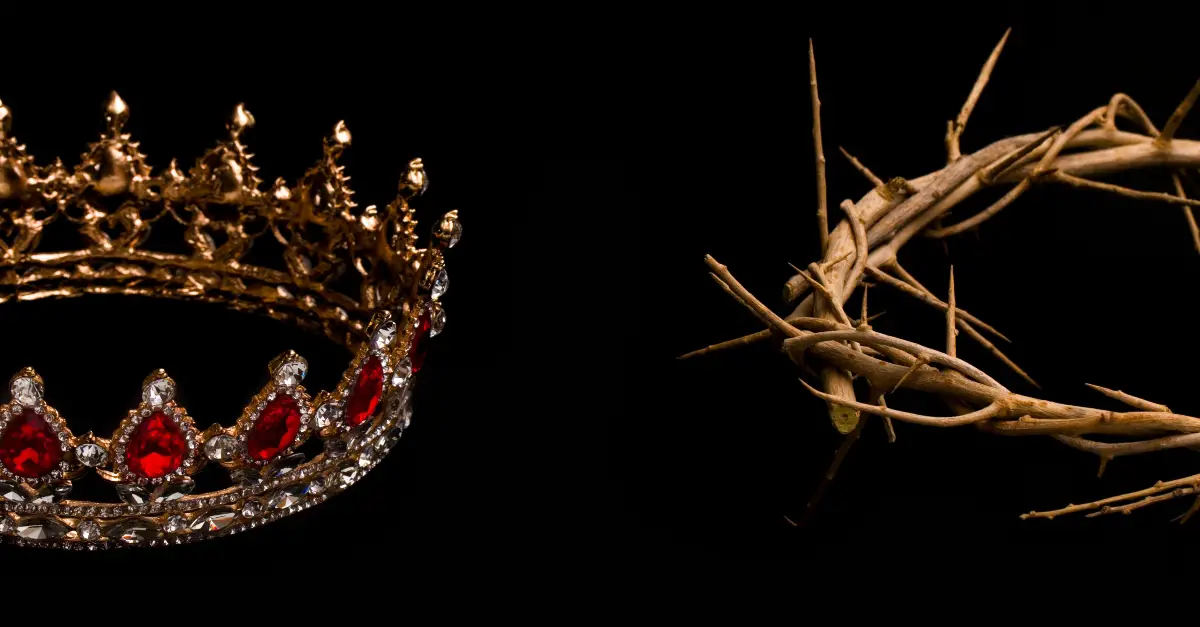
Date palm thorns
Another theory holds that Jesus’ crown of thorns may have been woven from the sharp thorns growing beside the leaves on date palm trees instead of Christ’s thorn jujube. Date palms were another common tree in Judea in Jesus’ time.
Date palm tree thorns can grow over three inches long and would have been incredibly painful woven into a “crown” and jammed onto Jesus’ head.
These thorns grow along the entire length of the palm leaves, providing plenty of raw materials for soldiers to hastily weave a cruel crown.
Additionally, date palms thrived in Jerusalem so would have been easily available near where Jesus was brought before Pilate and the gathered crowds (John 19:1-3).
Other theories
While Christ’s thorn jujube and date palms seem to be the most plausible sources for Jesus’ crown of thorns due to abundance near Jerusalem, there have been other theories proposed.
One suggestion is branches from Pistacia lentiscus shrubs (also called mastic shrubs) common near the Mediterranean.
Others propose tangled branches from the rhamnus lycioides (black hawthorn bush) could have been used by Roman soldiers to mock Jesus’ kingship.
Some of these other possible plants had downsides – mastic branches are thick and difficult to weave into a “crown” shape. Hawthorn plant thorns provide small blood droplets that could have coagulated quickly when shoved onto Jesus’ scalp.
So while other plants have been proposed as sources for Christ’s agonizing crown, most evidence continues to point to either Ziziphus spina-christi or date palm thorns as the mocking crown’s raw materials.
The Legacy of the Crown of Thorns
Relics and art
The Crown of Thorns has a remarkable legacy as one of the most revered relics in Christianity. According to tradition, pieces of the twisted thorns were distributed widely across Europe in the Middle Ages.
Today, many churches still possess thorns purportedly from the crown.
The thorns have inspired a rich tradition of Passion art and iconography over centuries.
Remarkable works by great masters like Caravaggio, Hieronymus Bosch, and Salvador Dali all feature the Crown of Thorns as a powerful symbol of Christ’s suffering and sacrifice.
Beyond the relics themselves, vivid artistic depictions keep the symbolic legacy of the crown alive. As humanity reflects on the depths of Christ’s pain and the meaning of His passion, this simple crown of thorns retains an incredible power to move us.
Significance to Christianity
As an instrument used to mock and torture Jesus in his final hours, the Crown of Thorns has profoundly shaped views of Christ’s Passion in Christianity over centuries.
Along with the cross itself, the woven crown of sharp thorns dug into Jesus’s head epitomizes the physical suffering he endured for humanity’s sake.
This powerful symbol of pain, mocked majesty, and redemptive suffering lies at the heart of the Passion story.
Beyond its presence at Christ’s Crucifixion, a few key details give special resonance to the Crown of Thorns in Christian thought:
- The excessive cruelty and mockery the crown represents
- The piercing agony it would have caused pressing into Jesus’s head
- How it fulfilled the prophecy of the Messiah’s suffering servant
These aspects help explain the Crown of Thorns’ status as one of the preeminent symbols of Christ’s Passion for over two millennia of Christian tradition.
As an arresting emblem of Jesus freely accepting agony and humiliation out of love, the twisted thorns continue to shape devotion and worship today.
Conclusion
Jesus’ crown of thorns has become one of the most iconic symbols of his Passion and crucifixion. While the original crown was lost to history, scholars believe it was woven from the thorny branches of the Christ’s thorn jujube tree.
The mock crown made of painful spikes represented Jesus’ suffering and willingness to sacrifice himself for humanity’s sins.
Today, depictions of the crown of thorns remain a powerful reminder of Christ’s love and the depths of his suffering for our salvation.

